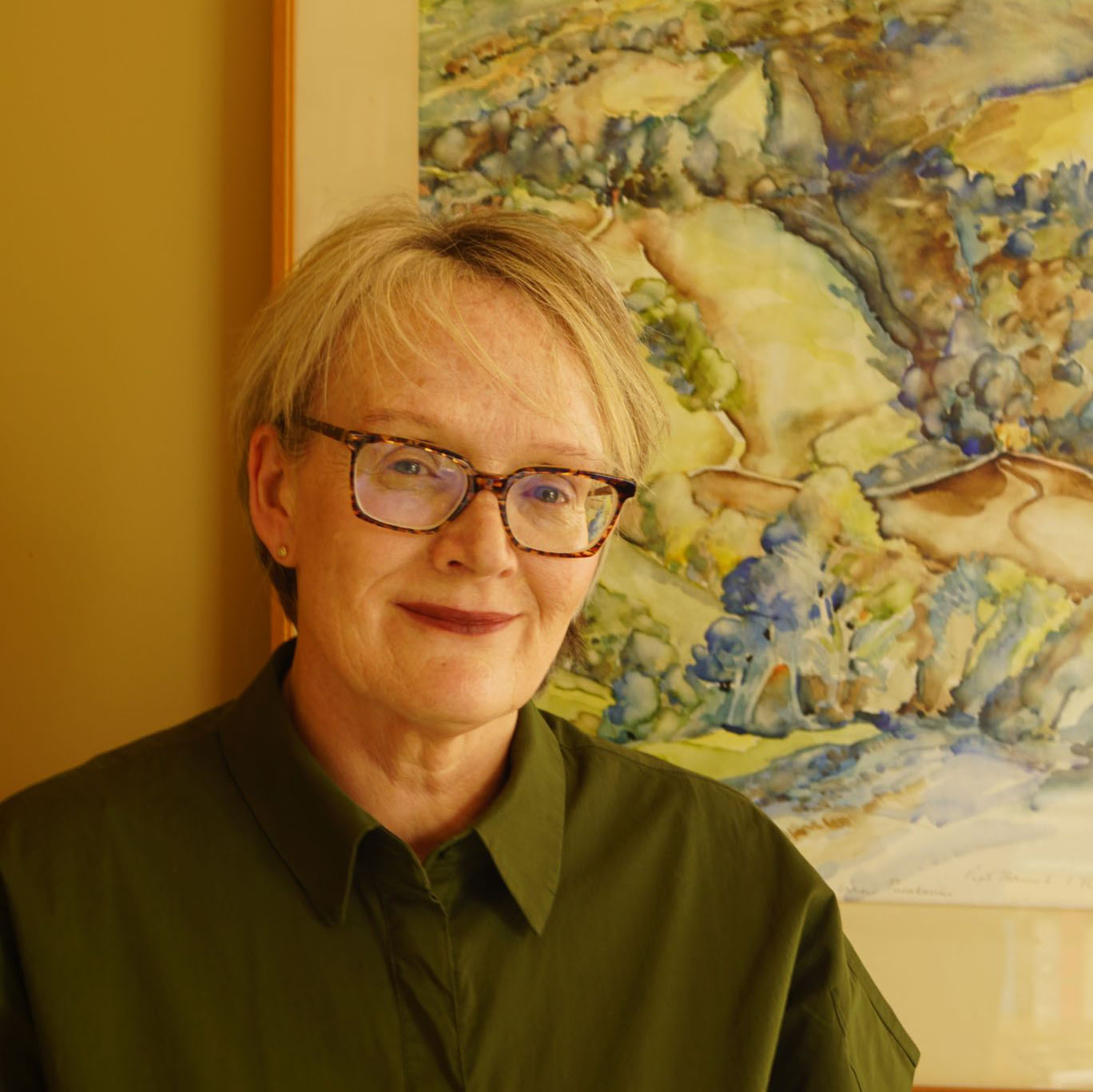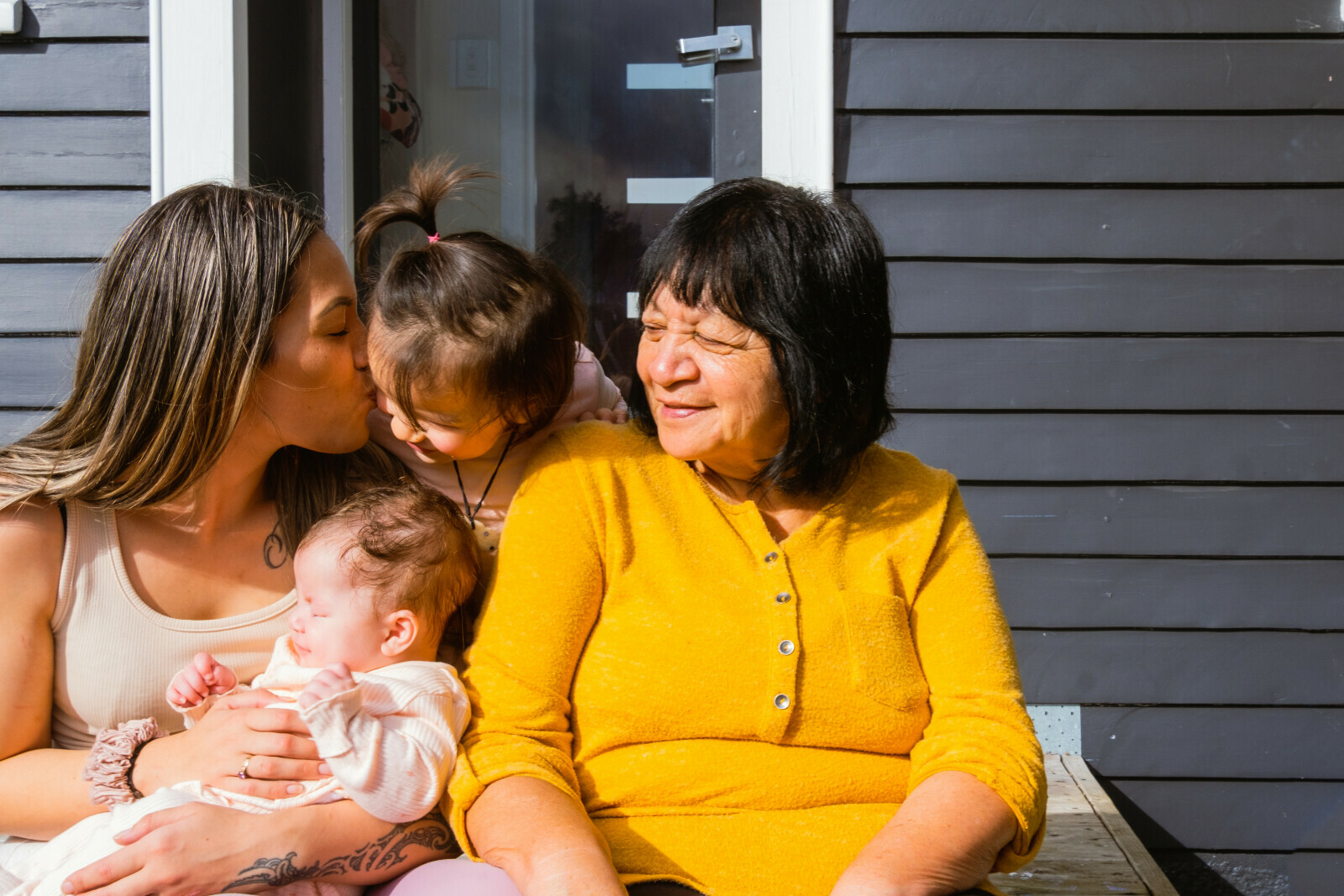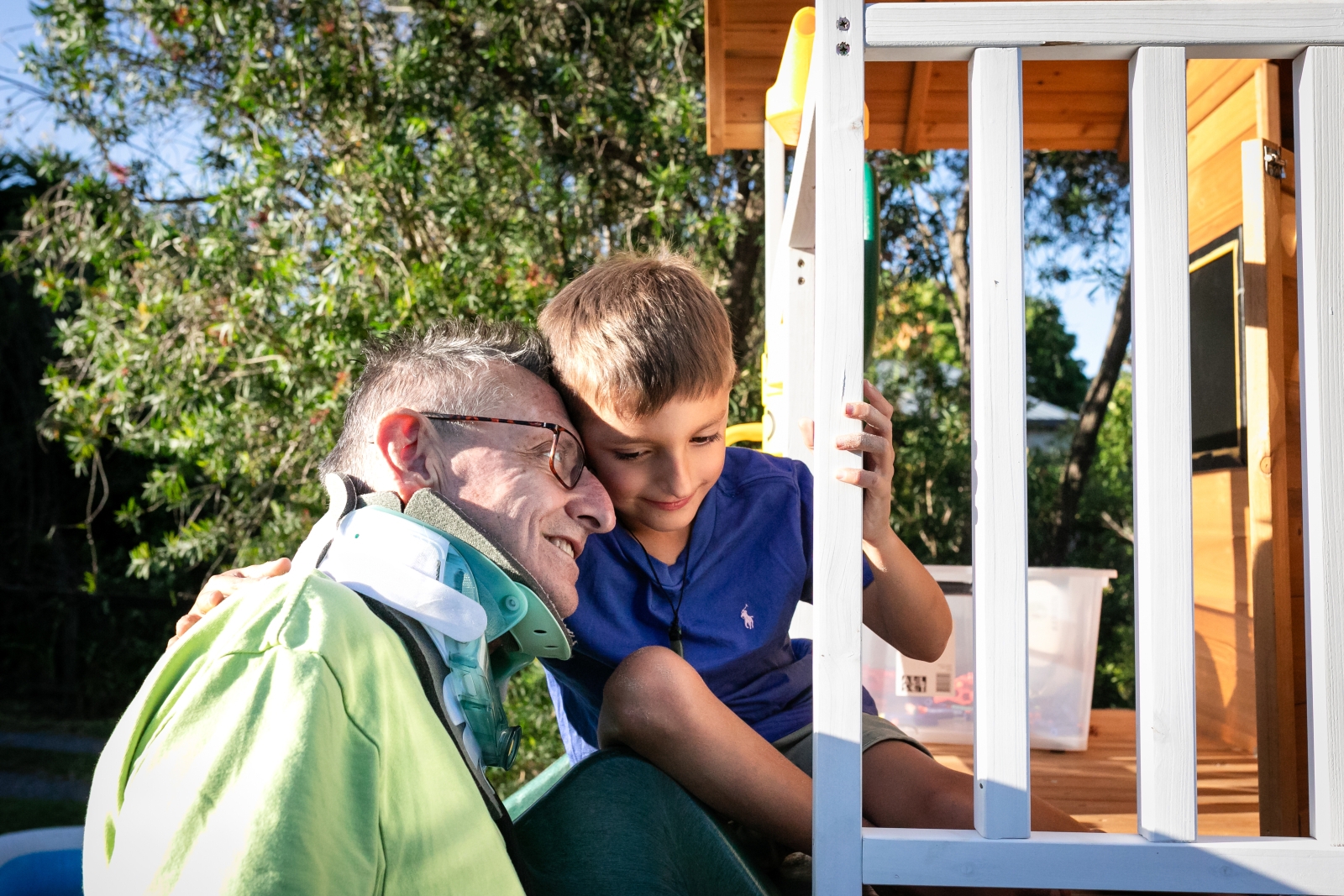Feature article
Multigenerational living: Everything you need to know
Look for a good entertaining space and separate areas too.

The trend for multigenerational living is something that’s on the rise in Aotearoa New Zealand - where families pool their money to buy or build a home to share with three generations. The most common scenario is where adult children and their families buy with older parents but there are other examples too.
The reason for this growing trend? With an increasingly multicultural population, families who are migrating to Aotearoa New Zealand are bringing their extended family with them, and living together makes perfect sense as it’s the norm at home.
But plenty of Kiwi families are considering it for all kinds of practical reasons. During the Covid lockdowns, families apart from grandparents around the country, felt helpless, being unable to visit them or deliver meals and groceries and keep an eye on them.
Another reason is of course finances, as many families are stretched in the cost of living crisis it makes sense to pool resources. The more people you have working in a household, the bigger the safety net there is if one of you is made redundant. And if you buy together, you can have one nice house instead of two or three less desirable ones.
The proportion of households with two or more generations has increased in recent years, says Dr Chris Litten, the Group Manager of Research at the Building Research Association of New Zealand (BRANZ).
“Multigenerational housing offers potential benefits for social, economic and environmental sustainability such as enhancing intergenerational support, reducing housing costs and optimising land use,” he says.
International examples of multigenerational living
Dr Natalie Allen, co-founder of The Urban Advisory, is researching multigenerational living, funded by BRANZ.
Multigenerational living could take the form of grandparents, adult children and grandkids;
grandparents and grandchildren or even adult siblings with their families, she says. There’s a lot of diversity of what multigenerational living looks like. Māori papakāinga (housing on ancestral Māori land) naturally lends itself to multigenerational living and Pacific families also have a tradition of living intergenerationally so have a desire to return to this way of living.
In Aotearoa, there isn’t a set typology of what this type of housing looks like from the outside. In Asia and the Middle East it’s common for it to be housed across apartment floors, notes Natalie. This Mount Roskill MGL home won a 2020 Architectural Designers NZ Award.
The country’s planning and building legislation simply doesn’t reflect the reality of demand for multigenerational living in Aotearoa at the moment, says Natalie. From a planning point of view, one of the issues is kitchens. If you have a shared kitchen, it’s easier under current regulation, but if there are multiple kitchens in one dwelling less so. A minor dwelling can have a kitchenette.
“This is one of the reasons why there’s some excitement about the Granny Flats proposal which would make it easier to have grandparents on the same land as their children and grandkids,” she adds.
If you design new you can address the needs of extended family but it’s more difficult to retrofit standard 3-bedroom typologies to suit, says Natalie.
Outside of Auckland, where land size is a bit larger, the researcher has seen an L-shaped design in multigenerational homes where the kitchen is the heart of the design and each family has a wing of the home for living.
People in Aotearoa living the multigenerational dream
After Natasha’s father died over eight years ago, the primary school teacher and her retired mother, Nora, decided to pool their resources and build an extended family home. It would accommodate herself, her adult son Reuben, and Nora. Natasha’s brother, Tim, his partner and their infant daughter were coming back from Australia, so they wanted the home to accommodate them as well.
Natasha and Nora went for a home and income design from Generation Homes, who were selling house and land packages in Orewa. Theirs was the first but there are a number of multigenerational homes on the street developed by Generation Homes now. The family went for a four bedroom main home with her mother’s bedroom downstairs and the three bedrooms upstairs. The 60 sq m two bedroom minor dwelling, with kitchen and living room is rented by her brother and his young family.
Tim and his family went into the minor dwelling which they rent from Natasha and Nora, at “mates rates”. Nora, a youthful late 60s, owns the lion’s share of the home, Natasha putting in a contribution too after a number of years renting.
The benefit of the multigenerational home is that Nora has family around her as she ages, and the property gives Natasha financial security and a stable home instead of continuing to rent for years.
“We made sure there were three living rooms in the main house, so everyone had their own space,” says Natasha. Nora’s bedroom and ensuite are downstairs, the other two bedrooms upstairs. There’s a large open plan kitchen living space on the main level which is where the family gets together. In the extended family, this is the place to come to for big dinners.
Tim and his family have been living in the minor dwelling for over two years and when they move on to a larger home, Nora and Natasha will have the option of renting out the minor dwelling to non-family though Reuben, in his mid 20s now, may well have other ideas by then.
The family has settled into this style of living without any real hiccups. Natasha and Nora enjoy having a little niece/granddaughter in their midst. “It’s so nice having the little one popping in and out,” says the primary school teacher.
Tips on multigenerational living
How does it work on a daily basis? “We all get on pretty well. We kind of know when to stay out of each other’s space, we can read each other. We’re very similar in how we like to keep the house, so we haven’t had any major issues. We all know what Mum likes and doesn’t like,” says Natasha.
“Depending on what’s happening the majority of us will eat together and one of us will cook,” she says.
Multigenerational living on a lifestyle property
South African-born Lee Smith grew up in Cape Town living with extended family, so it was the most natural thing in the world for her to copy that multigenerational living with her own family in Aotearoa.
Lee and her Kiwi husband Paul, their two children and her mother and father-in-law, moved into a brand new Signature Homes house in 2022 on a one hectare Dairy Flats lifestyle block. Lee and Paul’s part of the house is 240 sqm and Lee’s mother’s is 60 sqm and they each have a garage. Her mother’s space has a bedroom, bathroom and small kitchen and though separate, it looks like one large house from outside.
Lee’s mother, who still works full time, owns a portion of the Dairy Flats property, she also owned a portion of their former home which had a separate minor dwelling .
Lee and Paul worked with Jono Skinner Signature Homes Rodney & North Shore to create the large 300 sqm plus house which was designed to be the hub for all family occasions.
“Our living area is a big open plan space with a massive kitchen island bench that doesn’t have a sink in it so we can do buffets. There are huge ranch sliders that open out to the patio and a pergola that overlooks the swimming pool and spa,” says Lee.
“My house has always been where the whole family gets together for Christmas, Easter and birthdays,” she adds.
Lee and Paul’s bedroom is at the back of the house so they can shut the door and have some peace. The children, 11 and 14, have a wing on the other side of the house with bedrooms, a bathroom and their own living room. Lee’s mother’s separate granny flat is attached to the house but there’s no internal access so they each have their own space and Paul’s father has a separate sleepout of his own on the property.
Every Tuesday night, Paul’s father and Lee’s mother join the family for dinner and every Friday night, Lee’s daughter goes to her Nana’s for a sleepover, even though she could easily go home.
“The kids are always back and forth from my mother’s and regularly pop over to Grandad’s for a game of checkers or snakes and ladders,” says Lee, who adds she’s never had to pay for babysitting.
The advantages are plain to see. Lee’s mother, who still works full time, picks the kids up from their Albany school a couple of times a week, while her father-in-law drops them off and is around to do things with them in the school holidays.
The pros well outweigh any cons. For the grandparents, they know as they go into retirement they don’t have to be upended from their homes, says Lee. She and Paul could never have afforded a lifestyle property without Lee’s mother pitching in and she wouldn’t have been able to either. “It’s benefited both of us,” says the mother of two.
The Smith family’s tips on multigen living
“Everyone has to be able to have frank conversations without emotion. You have to have boundaries, to respect each other’s space and not be in each other’s pockets.” says Lee.
“When you financially own a house together, there has to be clarity around who mows the lawn, does the maintenance, and who pays for it. You’ve got to be mindful and respectful of each other and to say when something’s not working. You deal with things as they come up,” she adds.
How large house builders are catering for multigenerational living
The cost of living is driving the interest in multigenerational living, says Jono Skinner, new home consultant at Signature Homes Rodney & North Shore. The company, which also serves the Auckland Central region, designs bespoke solutions for homeowners, and many can be tailored for multigenerational living.
“The arrangement not only unites families but also provides elderly parents with proximity to loved ones while maintaining their independence,” he adds. As life and transport challenges increase, having extended family on a single piece of land presents numerous advantages.
Home and minor dwellings, also known as home and income properties, offer a practical solution to extended families, allowing younger generations to come into the property market sooner if they have a financial share of the multigenerational home.
“With a genuine home and income property, you have the flexibility to rent out part or all of it as needed,” he says.
There are additional costs to building properties like these but the overall investment is often significantly lower than building two separate homes with dual titles.
Jono warns that new home and income builds aren’t permitted in all zones in Auckland. They’re generally allowed in rural, coastal and single house zones, though resource consent may be required. In other zones, it may be possible to add a second or third dwelling on a single site but each situation is evaluated on a case by case basis, he explains.
An important question for people considering multigenerational living, is do they want to live independently from each other or have shared living, says Signature Homes designer Robyn Thomson.
She finds that a lot of clients living in multigenerational homes like separated bedroom areas, for instance that the primary bedroom suite, walk-in wardrobe and so on are at one end of the house and the childrens’ bedrooms and their own living area or family room is at the other end.
“What’s quite important is indoor outdoor living with these homes and that there’s access from the bedroom to the outside area," she says.
People living in multigenerational set ups often want to have an ensuite for every bathroom too, which can put the price of the property up quite substantially, adds Robyn.
Peter Suckling, Managing Director of Generation Homes Auckland North typically sees two sorts of scenarios for multigenerational living. Either it’s a larger single house designed to have space with separate areas for different living groups and a shared larger kitchen. Or it’s a legal home and income property, where it’s all under one roof but the minor dwelling is completely separate from the main dwelling with its own external access, kitchen living and so on. The latter scenario has really ramped up over the last five years and it’s a very good solution for multigenerational living, he says.
“The beauty of the home and income solution versus the larger home for extended families living together, is when life and requirements change in five or ten years’ time, Mum and Dad can move to the minor dwelling and get income from the main home to fund their retirement,” says Peter.
It all depends on the size of the house but he thinks a newly built home and income would cost around $80,000 to $100,000 more than a traditional home of the same size because of the required additional compliance and services works and the council development contributions.
Consult advisers before taking the leap
A mortgage broker will help you through the financial process of pooling your resources with family and in this more complex financial transaction, it’s a good idea to draw on experts like these.
David Green, Advice HQ mortgage broker and financial adviser and chartered accountant, says he’s seeing a growing number of multigenerational living situations, and recently helped a South American family buy together.
“Historically you may have assumed certain cultures gravitated towards it, but now it’s just families across the board considering living with extended family,” he says.
The mortgage broker has a client returning from overseas at the same time as their parents are downsizing. “They’ve said, we need a house for our family, Mum and Dad are downsizing. We want to see them, they want to see us, why not do it together?”
David points out the financial difference between buying a large house with family and a home and income when it comes to future proofing the multigenerational home. He has a client with a large house and he wants to let part of it, but there’s no separate entrance so the tenants he could rent to would be limited to those he knows well.
And, aside from a financing perspective, the bank won’t recognise the part of the house being rented out, as a separate rental, it would just view a tenant as a boarder, says the mortgage broker.
By comparison with a minor dwelling, with its separate interest, if the situation changes with elderly parents who’ve been living there, you’ve got options for another rental stream in that wing of the house.
Also with a home and income option, reselling may be more attractive than a large standalone house both because it may provide more capital growth and resale may be easier.
Legalities to keep in mind
When buying a property with other family members, the financing arrangements must be carefully thought through and documented, says law firm Turner Hopkins partner Samuel Ames.
The two forms of ownership of property are tenants in common and joint tenants. Under a tenancy in common, a person can own a share of a property, and this is expressed on the title, he says. That share needs to be dealt with as part of your estate planning and consideration needs to be given to who might inherit your share. With tenants in common ownership, a property sharing agreement with other co-owners is necessary and it may contain a clause giving the others power or attorney over your share to deal with administrative matters.
“Ideally, the document is future proofed for any change in circumstance where one person ends up contributing more to servicing the debt or wants to sell their share,” says Samuel.
A property sharing agreement would dictate how the property would be purchased, managed and subsequently sold, adds Turner Hopkins partner Kate Chivers.
Parties entering a property sharing agreement must ensure it meets their needs at the time but things can change in the future, so there needs to be an exit strategy where the parties contemplate how to buy out one another or, if that can’t occur, then how the property should be marketed for sale and how the settlement proceeds would be distributed. Those in relationships must also consider their position in respect to the Property Relationships Act 1976 (PRA) and to seek separate advice on this, adds Kate.
Anybody considering this type of purchase collectively with family needs independent legal advice, she says.
One lawyer may act for the group making the purchase and then separate lawyers for each part of the group will need independent advice, she suggests.
“Some families may think they don’t need lawyers but there’s no point cutting costs at the front end because if you get it wrong it will be exponentially worse on the other end when disputes arise,” says Kate.
Author
Other articles you might like









